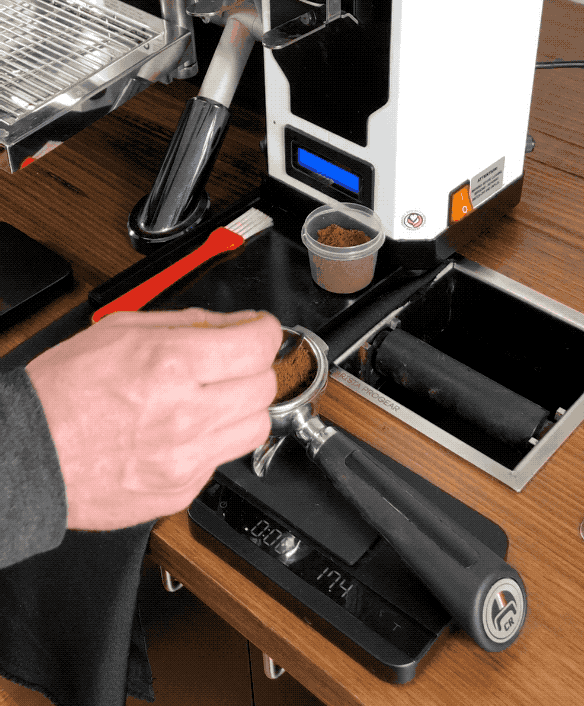Dosing
Baristas are responsible for accurately portioning coffee grinds into the filter basket. The physics of dosing is simple, but not all coffee equipment is simple. Some grinders have timers to help you dose; some allow for multiple doses to be programmed. No espresso grinders are so predictable that they don’t need to be calibrated against a weighing scale. Typically, this calibration needs to occur many times throughout a shift. Some of the very newest grinders have a scale built-in that calibrates automatically, but these are the exceptions.
Using Your Scale
Start with a clean, hot, dry portafilter. (For more details on this subject, see Lesson 1.7.) The portafilter can be weighed and then set to zero on a scale before you begin dosing into it. After portioning the grinds into the filter basket, you can return the portafilter to the scale and check the weight. If you find you have too much coffee, you can remove some with a spoon. If you don’t have enough coffee, you can use the scale to help you accurately top up.

A quick alternative to this, particularly if your scale can’t handle the weight of a portafilter, is to weigh your coffee in a small cup and then pour the grinds into the filter basket. This process is somewhat slower, however. Furthermore, scales that can handle the weight of a portafilter can be inexpensive.
If Your Grinder Has a Digital Timer
The timer on an espresso grinder controls the length of the time interval for which the motor will remain turned on. Many designs allow you to set up more than one preset. The efficiency of grinders can vary greatly. It can take anywhere between 2 and 10 seconds of grinding time to obtain enough coffee for a double espresso. If 5 seconds gives you a little less coffee than your recipe calls for, then the timer should be adjusted to run a few tenths of a second longer for the next dose. As a work shift progresses,